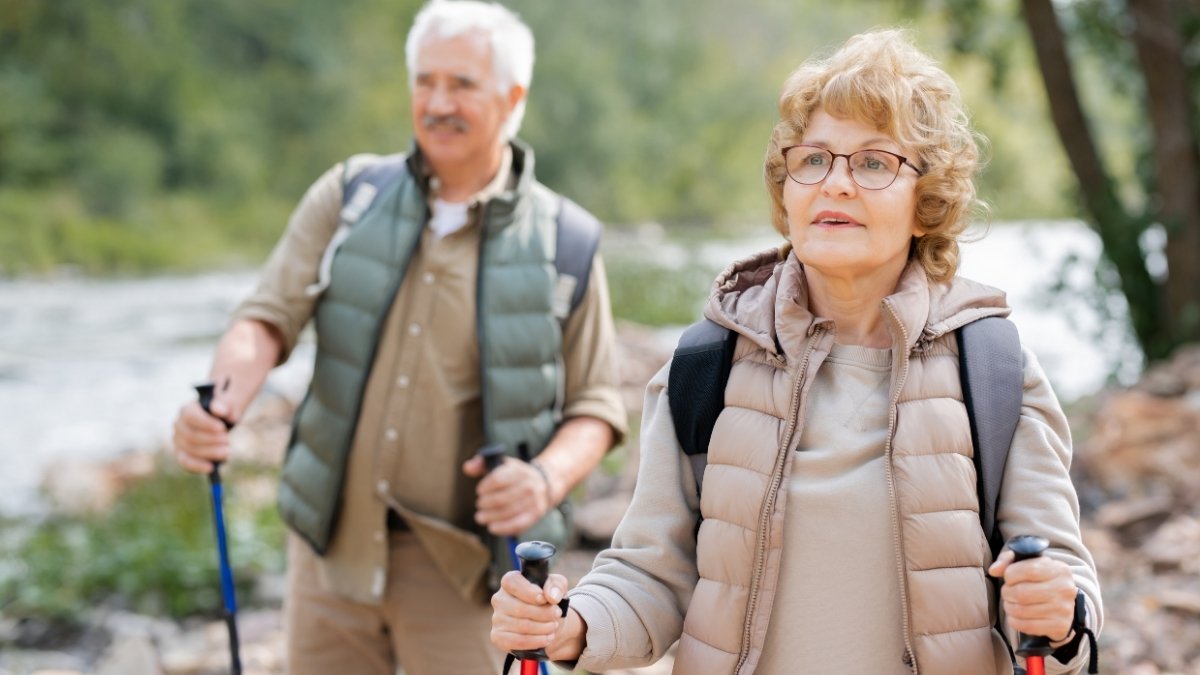7 Senior-Friendly Hiking Hacks to Boost Safety and Trail Joy (According to the hikers)
Feeling uncertain about hitting the trails in your golden years? Many seniors want to experience nature’s beauty through hiking but worry about safety, stamina, and keeping up with younger folks.
The good news: age doesn’t define your hiking abilities. With smart preparation and the right techniques, you can confidently tackle trails while protecting your joints and building strength.
Let’s explore seven practical hiking hacks that will help you stay safe and find joy on every outdoor adventure. These strategies work for hikers of all experience levels, making the great outdoors accessible and enjoyable for everyone.
7 Hiking Hacks for Seniors!
Feeling uncertain about hitting the trails in your golden years? Age doesn’t define your hiking abilities! With smart preparation and these practical techniques, you can confidently tackle trails, protect your joints, and build strength. Let’s explore!
Personal Story: Last summer, 73-year-old Martha conquered a 3-mile Adirondacks trail on her first hike, thanks to proper gear and pacing. Her success proves age is just a number with the right approach! According to the American Hiking Society, seniors hiking twice a week show improved cognitive function and reduced anxiety. The trails are waiting for you, offering joy, friendship, and accomplishment. What matters most isn’t distance, but the moments you create. Your next outdoor experience could be an amazing new chapter!
1. Smart Planning Makes Perfect Outings
The key to a great hike starts before you step on the trail. First, check with your healthcare provider about any specific limitations. Then, study your chosen trail's difficulty level, length, and terrain features.

Print out or download offline maps since cell service can be spotty. The ideal time for seniors to hike is during mid-morning when visibility is good and temperatures are moderate.
Tips:
- Use weather apps to check forecasts 24 hours before hiking
- Choose trails marked as "easy" or "moderate" when starting out
- Start with short 1-2 mile hikes and gradually increase the distance
- Save your planned route on your phone's offline maps
2. Essential Gear Selection
Skip the expensive specialty equipment - focus on the basics that matter. A comfortable daypack should hold water bottles, snacks, and emergency supplies. Invest in moisture-wicking clothing that keeps you dry and comfortable.
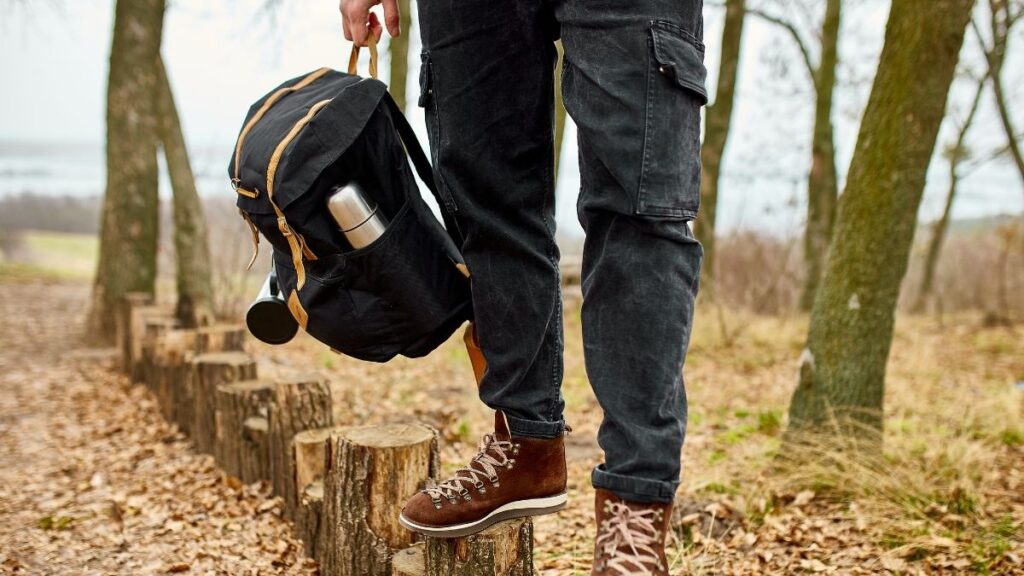
The most critical gear choice is your footwear - look for hiking shoes with good ankle support and non-slip soles.
Tips:
- Pack a basic first-aid kit with band-aids and any personal medications
- Bring at least 16 oz of water per hour of planned hiking
- Wear layered clothing that can be easily added or removed
- Choose bright-colored clothing to stay visible on trails
3. Balance Support Systems
Trekking poles aren't just accessories - they're valuable tools that can reduce knee strain by up to 25%. When selecting poles, look for adjustable heights and comfortable grips.
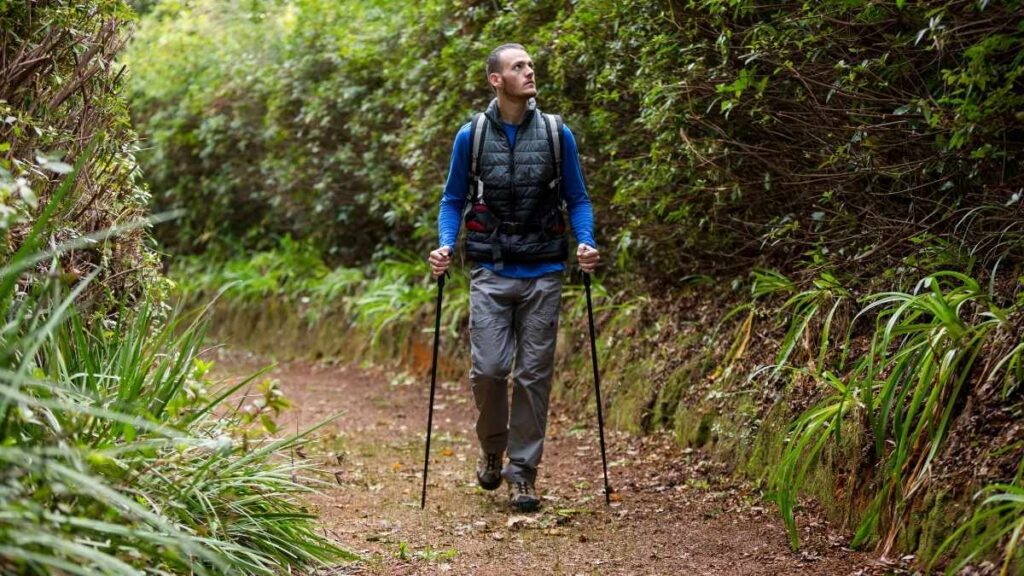
The right technique involves keeping your elbows at 90 degrees and moving the poles in rhythm with your steps. This creates a four-point contact system that significantly improves stability on varied terrain.
Tips:
- Adjust pole length - shorter for uphill, longer for downhill
- Look for poles with shock-absorption features
- Practice pole usage on flat ground before hitting trails
- Consider wrist straps for added security
4. Pre-Hike Movement Prep
A proper warm-up reduces injury risk and enhances hiking enjoyment. Start with 5-7 minutes of gentle movements focusing on major muscle groups. Simple ankle rotations, knee lifts, and arm circles prepare your body for the trail ahead.
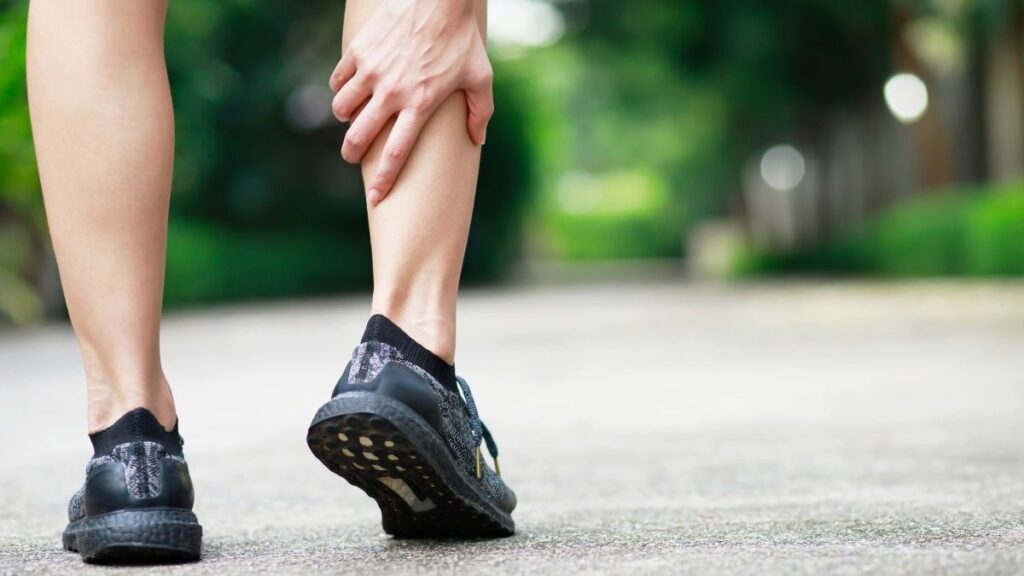
Pay special attention to warming up your calves and hip flexors, as these areas often get the most work during hiking.
Tips:
- Do ankle circles in both directions to improve stability
- Practice standing on one leg to enhance balance
- Perform gentle knee bends to warm up leg muscles
- Include shoulder rolls to prepare for backpack carrying
5. Sustainable Pacing Strategies
Finding your right hiking rhythm makes all the difference. The "talk test" is a reliable guide - you should be able to carry on a conversation while hiking. Take regular breaks every 30 minutes, even if you're feeling strong.
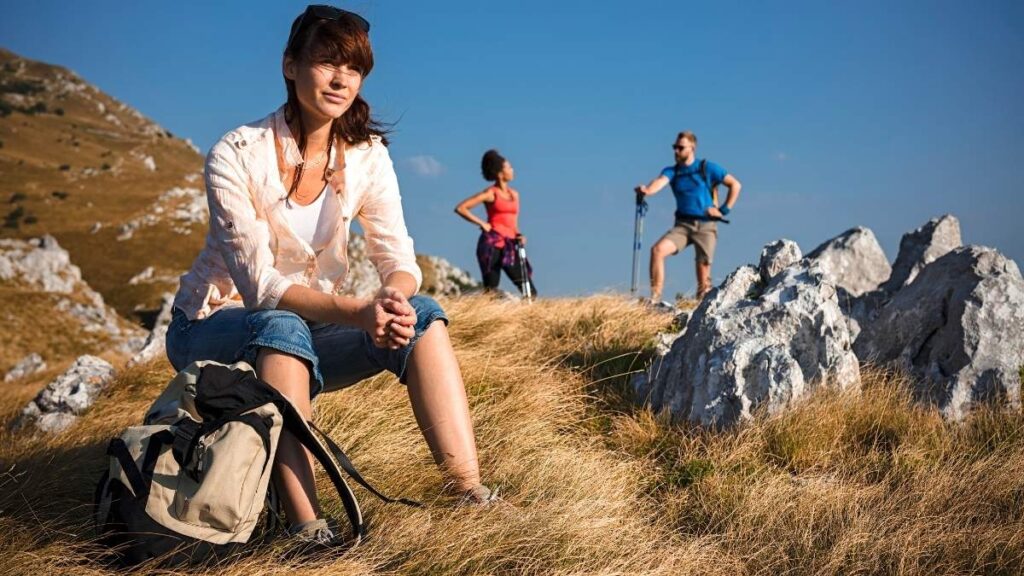
These rest periods are perfect for hydrating, snacking, and enjoying the surroundings. Remember that hiking shouldn't feel like a race.
Tips:
- Take smaller steps on steep sections
- Rest for 5 minutes after each 30 minutes of hiking
- Stay hydrated by drinking before you feel thirsty
- Use natural rest spots like fallen logs or scenic viewpoints
6. Time Management Skills
Timing your hike right keeps it safe and enjoyable. Plan to finish your hike at least two hours before sunset. For a beginner senior hiker, calculate your hiking time using a 30-minute-per-mile pace on flat terrain.
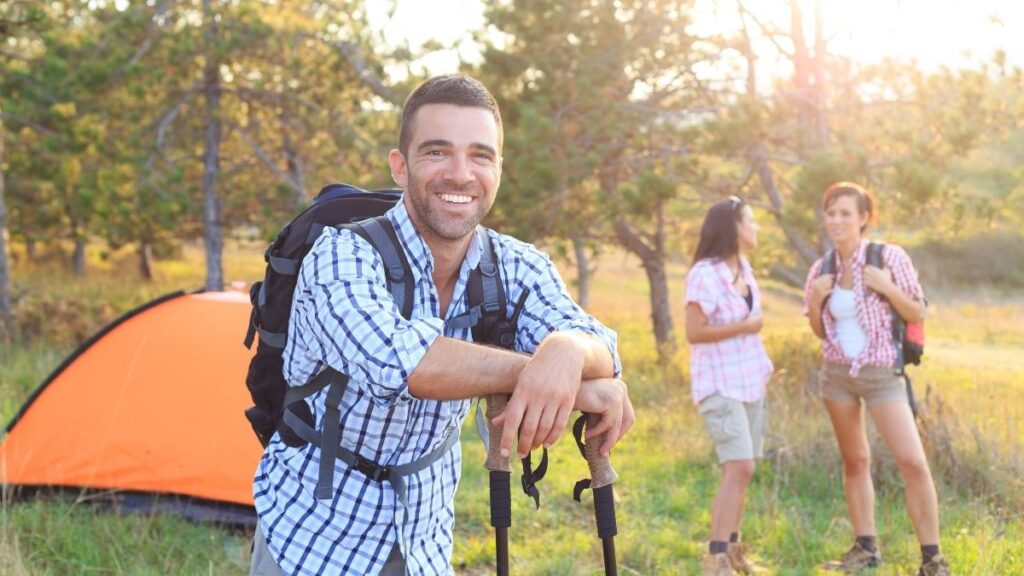
Add 30 minutes for every 500 feet of elevation gain. This conservative estimate helps prevent rushing and ensures a comfortable experience.
Tips:
- Start early to avoid peak heat and crowds
- Allow extra time for photo stops and rest breaks
- Set a turnaround time and stick to it
- Track your start time and check your progress regularly
7. Social Hiking Connections
Group hiking adds safety and social benefits to your outdoor experience. Look for senior-specific hiking groups in your area through community centers or outdoor retailers.
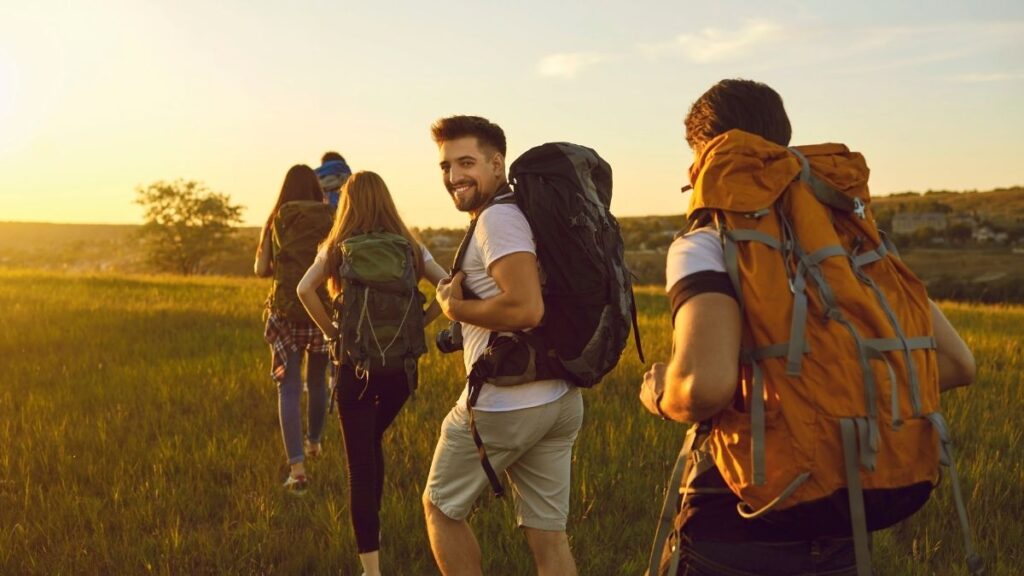
These groups often have experienced leaders who can share valuable tips and ensure appropriate pace-setting. They're also great ways to make new friends who share your interest in outdoor activities.
Tips:
- Join local hiking clubs with senior-focused programs
- Start with guided group hikes to learn trail etiquette
- Share contact information with hiking buddies
- Consider volunteering for trail maintenance groups
Personal Experience
Let me share something that happens out on the trails all the time. Last summer, I hiked with a group of seniors in the Adirondacks. Among them was Martha, a 73-year-old first-time hiker who came well-prepared with trekking poles and proper gear. At first, she stuck to the back of the group, unsure about her pace.
But by following the "talk test" rhythm and taking regular breaks, she finished the 3-mile trail with a big smile. Her success story shows how age is just a number when you have the right approach and mindset.
Final Thoughts
According to the American Hiking Society, seniors who hike twice a week show improved cognitive function and reduced anxiety levels. The trails are waiting for you, and with these seven strategies, you'll be ready to take those first steps. Start small, listen to your body, and gradually build your confidence. Hiking offers so much more than exercise - it brings joy, friendship, and a sense of accomplishment. What matters most isn't the distance you cover but the moments you create along the way.
The best part? Every trail offers a new opportunity to grow stronger and more confident. So grab those hiking poles, pack your essentials, and join the growing community of active senior hikers. Your next outdoor experience could be the start of an amazing new chapter in your life.


